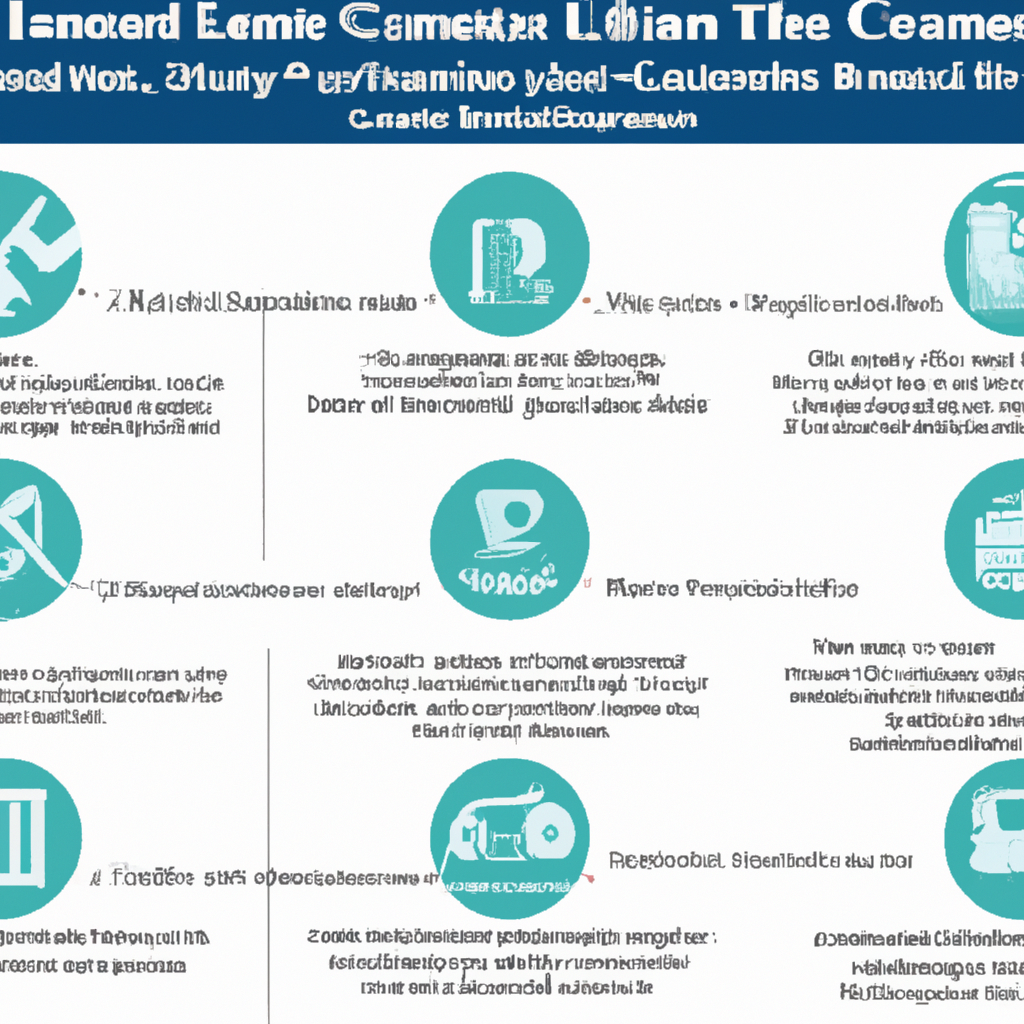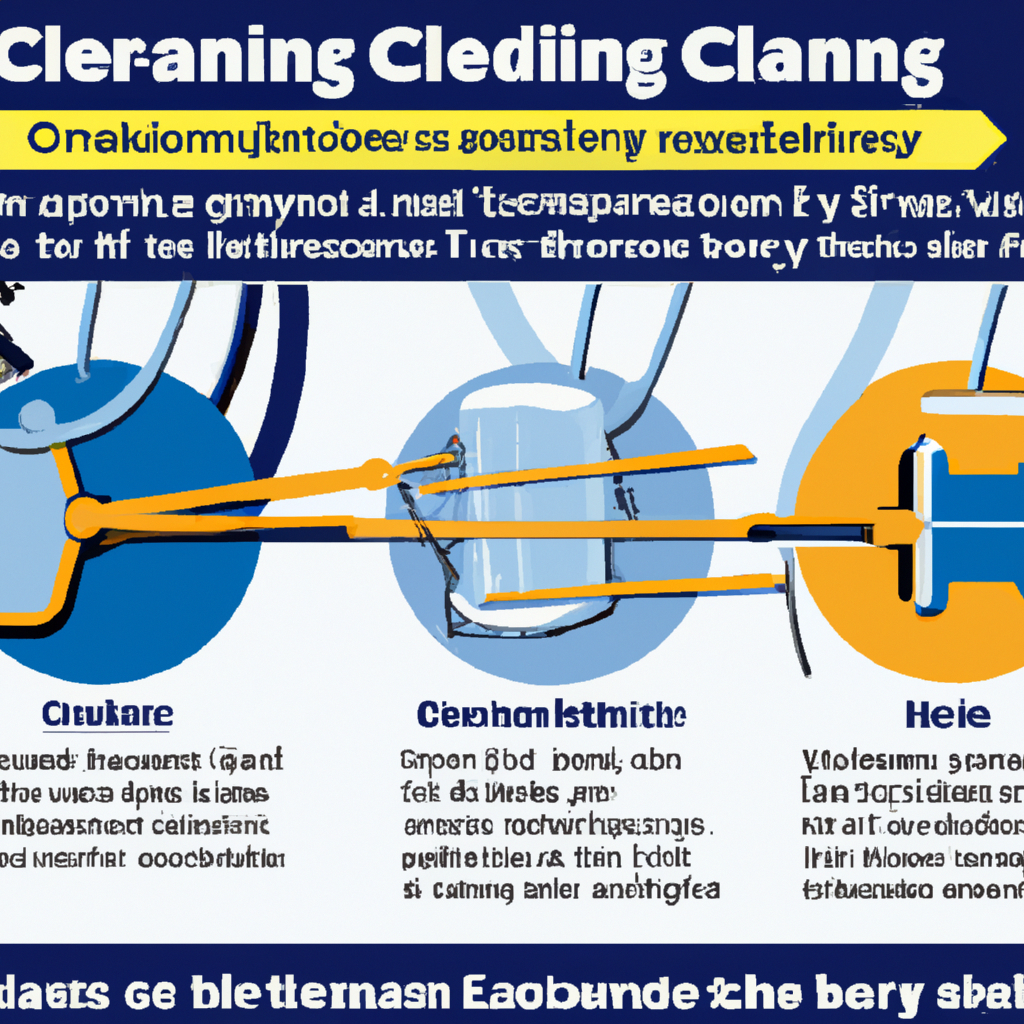In the bustling world of professional cleaning services, maintaining high-quality equipment plays a crucial role in delivering exceptional results. You may have wondered how often these cleaning companies rotate or replace their equipment to ensure optimum performance. Well, rest assured, as we take a closer look at this fascinating aspect, uncovering the secrets behind the scenes. From state-of-the-art vacuum cleaners to advanced floor scrubbers, discover the meticulous strategies employed by cleaning companies to keep their tools in top-notch condition. Prepare to be amazed as we unveil the inner workings of this integral process, revealing the dedication and commitment of these esteemed professionals in providing you with a spotless environment. Stay tuned to delve into the intriguing world of cleaning equipment maintenance!

Factors Affecting Equipment Rotation or Replacement
When it comes to maintaining a successful cleaning business, one crucial aspect is ensuring that your equipment is in good condition and up to date. However, the frequency of equipment rotation or replacement can vary depending on several factors. In this article, we will explore these factors, such as the frequency of use, type of equipment, quality of equipment, and cleaning industry standards. We will also discuss the signs that indicate the need for equipment rotation or replacement, as well as different strategies that cleaning companies can adopt to effectively manage their equipment.
Frequency of Use
The first factor to consider when determining the need for equipment rotation or replacement is the frequency of use. Cleaning equipment that is heavily used on a daily basis may require more frequent rotation or replacement compared to equipment that is used less often.
High-Use Equipment
Equipment such as vacuum cleaners, floor scrubbers, and carpet cleaners that are used extensively in commercial cleaning settings may experience higher wear and tear. These machines are often subjected to rigorous cleaning tasks, and their components can be more prone to damage or fatigue.
Low-Use Equipment
On the other hand, equipment that is used less frequently, such as pressure washers or window cleaning equipment, may have a longer lifespan. If such equipment is properly maintained and used according to manufacturers’ recommendations, it may not need to be replaced as often as high-use equipment.

Type of Equipment
Different types of cleaning equipment have varying lifespans and replacement needs. Let’s take a closer look at some commonly used equipment and their characteristics.
Vacuum Cleaners
Vacuum cleaners are essential tools in the cleaning industry and are used to efficiently remove dirt and debris from floors and surfaces. The lifespan of a vacuum cleaner can vary depending on its quality and the maintenance it receives. However, as vacuum cleaners experience continuous wear and tear, cleaning companies may need to rotate or replace them more frequently.
Floor Scrubbers
Floor scrubbers are designed to clean large floor areas efficiently. These machines are typically used in commercial or industrial settings with high foot traffic. Due to their heavy-duty usage, floor scrubbers may require regular maintenance and periodic replacement to ensure optimal performance.
Carpet Cleaners
Carpet cleaners are specifically designed to deep-clean and remove stains from carpets. Like floor scrubbers, carpet cleaners in commercial cleaning settings may require more frequent rotation or replacement due to the demanding tasks they perform. However, with proper maintenance and care, high-quality carpet cleaners can last for several years.
Pressure Washers
Pressure washers are powerful machines used to clean outdoor surfaces, such as driveways and walkways. Their robust design allows for efficient dirt and grime removal. Depending on the frequency and intensity of their usage, pressure washers may need to be replaced or rotated periodically to maintain their effectiveness.
Window Cleaning Equipment
Window cleaning equipment, such as squeegees and water-fed poles, is used for cleaning exterior surfaces and windows. These tools are typically subjected to less wear and tear compared to other types of cleaning equipment. They can last for several years with proper maintenance and regular inspections to ensure their functionality.
Quality of Equipment
The quality of cleaning equipment plays a significant role in determining its lifespan and the need for rotation or replacement. When considering the quality of equipment, several factors come into play.
Durability
High-quality cleaning equipment is typically more durable and resistant to wear and tear. These machines are designed to withstand the demands of commercial cleaning environments and can last for several years. Investing in durable equipment can help reduce the frequency of rotation or replacement.
Warranty
Equipment that comes with a warranty offers an added advantage. Warranties vary depending on the manufacturer and the type of equipment. Longer warranty periods indicate that the manufacturer has confidence in the quality and durability of their product. When purchasing cleaning equipment, it is advisable to consider those with extended warranties to protect your investment.
Maintenance and Repair
Regular maintenance and prompt repair of equipment can significantly extend its lifespan. Cleaning companies should follow manufacturers’ maintenance guidelines and promptly address any issues or breakdowns. Routine inspections, cleaning, and lubrication can help identify problems early on and prevent costly repairs or the need for premature replacement.
Cleaning Industry Standards
Cleaning companies must adhere to local regulations, health and safety guidelines, and professional associations’ recommendations. These standards can also influence the frequency of equipment rotation or replacement.
Local Regulations
Different regions and jurisdictions may have specific regulations regarding cleaning equipment, particularly for commercial settings. Some regulations may require regular inspections or the replacement of equipment after a certain period. Cleaning companies should stay informed about these regulations and ensure compliance.
Health and Safety Guidelines
Health and safety guidelines established by industry authorities may also affect equipment rotation or replacement. These guidelines prioritize the safety and well-being of cleaning staff and building occupants. Outdated or malfunctioning equipment may pose risks and should be replaced promptly to ensure a safe working environment.
Professional Associations’ Recommendations
Professional associations within the cleaning industry often provide recommendations and guidelines for equipment rotation or replacement. These associations stay up to date with the latest developments in cleaning technology and best practices. Following their recommendations can help cleaning companies optimize their equipment management strategies.
Signs That Indicate Equipment Rotation or Replacement
Recognizing the signs that indicate the need for equipment rotation or replacement is crucial for maintaining efficient and effective cleaning operations. Here are some common signs to look out for:
Deterioration of Performance
If a piece of cleaning equipment starts to perform poorly or functions at a suboptimal level, it may be time to consider rotation or replacement. Reduced efficiency in cleaning tasks can prolong the time required to complete a job and impact overall productivity.
Frequent Breakdowns
Cleaning equipment that frequently breaks down or requires extensive repairs may be nearing the end of its useful life. Frequent breakdowns not only cause delays and interruptions in cleaning operations but also increase maintenance costs.
Increased Maintenance Costs
As cleaning equipment ages, the cost of maintenance and repairs may rise. Components may wear out more quickly, leading to more frequent replacements. If the cost of maintenance starts to exceed the cost of investing in new equipment, it may be more cost-effective to replace the equipment altogether.
Incompatibility with Cleaning Methods
As cleaning methods and techniques evolve, older equipment may become incompatible or less efficient. Newer equipment may offer improved features, such as advanced filtration systems or ergonomic designs, that enhance cleaning outcomes. If existing equipment limits the adoption of more effective cleaning methods, it may be time to explore rotation or replacement options.
Updates in Technology
Advancements in technology can greatly impact the cleaning industry. New equipment may offer enhanced capabilities, efficiency, or innovative features that can streamline cleaning processes. As new technology emerges, cleaning companies should assess whether their current equipment can keep up with industry trends or if it’s time to consider upgrading.
Rotation or Replacement Strategies
To effectively manage cleaning equipment, cleaning companies can adopt different strategies for rotation or replacement. These strategies can be categorized into scheduled rotation, condition-based replacement, and technology upgrades.
Scheduled Rotation
Scheduled rotation involves setting specific timeframes for equipment rotation or replacement based on predetermined schedules. Cleaning companies can implement daily, weekly, monthly, or yearly schedules depending on their needs and equipment usage patterns. Regular inspections play a crucial role in identifying equipment that requires rotation or replacement.
Condition-Based Replacement
Condition-based replacement focuses on evaluating the condition and performance of equipment to determine the optimal time for replacement. This strategy involves conducting regular performance evaluations, scheduled maintenance, and monitoring the number of usage hours. By tracking equipment performance metrics, cleaning companies can make informed decisions regarding replacement.
Technology Upgrades
As technology advances, upgrading equipment becomes an essential consideration. Technology upgrades can result in improved efficiency, productivity, and safety. By staying informed about the latest advancements in the cleaning industry and regularly assessing their equipment, cleaning companies can identify opportunities for technology upgrades that can significantly enhance their operations.
Conclusion
The frequency of equipment rotation or replacement can vary across cleaning companies based on factors such as the frequency of use, type of equipment, quality of equipment, and adherence to cleaning industry standards. To strike a balance between cost and performance, cleaning companies must consider the durability, warranty, and maintenance of their equipment. Additionally, local regulations, health and safety guidelines, and professional associations’ recommendations play a vital role in determining the acceptable lifespan of cleaning equipment. By closely monitoring signs of deterioration, frequent breakdowns, increased maintenance costs, incompatibility with cleaning methods, and technological advancements, cleaning companies can adopt appropriate strategies for equipment rotation or replacement. This allows them to maintain quality control and ensure the safety of their cleaning operations.
